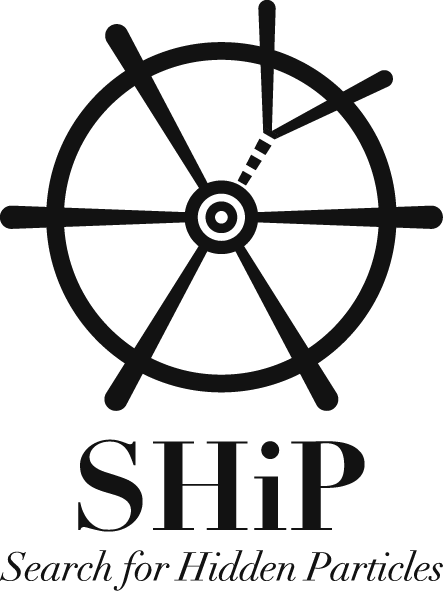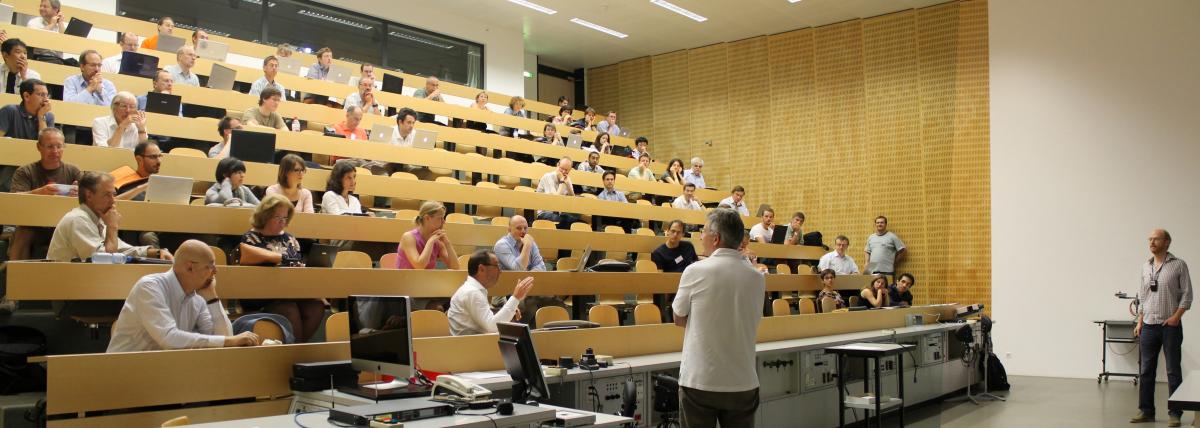SHiP Collaboration Hoist Sails
 With the results from LHC Run 1 as a backdrop, more than 100 physicists from 15 countries, including theorists, gathered on June 10 for a 2.5 day workshop hosted by the Zurich University to discuss alternative approaches to the remaining fundamental questions about the foundation of the Universe. The aim of the 1st workshop of the Search for Hidden Particles (SHiP) Collaboration was to kick-off the preparation of a timely experiment on the SPS to explore hidden portals of the Standard Model (SM). The physics case was addressed in 15 theoretical talks reviewing the current status and the most recent developments. Another 20 talks discussed in-depth the detector requirements, potential detector technologies and computing, complemented by extensive presentations on studies of the beam line and the experimental facility by the CERN accelerator and target physicists, and experts on civil engineering.
With the results from LHC Run 1 as a backdrop, more than 100 physicists from 15 countries, including theorists, gathered on June 10 for a 2.5 day workshop hosted by the Zurich University to discuss alternative approaches to the remaining fundamental questions about the foundation of the Universe. The aim of the 1st workshop of the Search for Hidden Particles (SHiP) Collaboration was to kick-off the preparation of a timely experiment on the SPS to explore hidden portals of the Standard Model (SM). The physics case was addressed in 15 theoretical talks reviewing the current status and the most recent developments. Another 20 talks discussed in-depth the detector requirements, potential detector technologies and computing, complemented by extensive presentations on studies of the beam line and the experimental facility by the CERN accelerator and target physicists, and experts on civil engineering.
This initiative of the SHiP Collaboration is largely coupled to the recent discovery of the Higgs boson with mass ~125.5 GeV, which implies that the Standard Model may be a self-consistent, weakly coupled, effective field theory all the way up to the Planck scale. Nevertheless, it is clear that the Standard Model is incomplete, since it does not provide an explanation for the observations of non-zero neutrino masses, the excess of matter over antimatter in the Universe, and the presence of non-baryonic dark matter. These shortcomings may have their origin in the dynamics of new physics involving very weakly interacting particles such as predicted by models of portals to a hidden sector with heavy Majorana leptons, dark photons etc, or in Supersymmetry. Given the small coupling constants and typically long lifetimes, these new particles have not been significantly constrained by previous experiments, and the reach at current collider experiments is limited by both luminosity and acceptance.
The proposed SHiP experiment is a new general-purpose beam dump facility which will make use of the high intensity of the SPS, and in particular the large production of charm mesons with the 400 GeV beam, to provide sensitivity to a wide variety of light long-lived exotic particles. With an integrated total of 2x1020 protons on target, the experiment will be able to achieve sensitivities which are up to four orders of magnitude better than previous searches, accessing a significant fraction of the unexplored parameter space which is consistent with cosmological constraints. The SHiP detector consists of a long evacuated decay volume, followed by a magnetic spectrometer and particle identification in order to fully reconstruct and distinguish the different decay modes and reject backgrounds.

The aim of the 1st workshop of the Search for Hidden Particles (SHiP) Collaboration was to kick-off the preparation of a timely experiment on the SPS to explore hidden portals of the Standard Model. (Image credit: F. Lionetto)
Moreover, as discussed at the workshop the facility is also ideally suited for studying the interactions of tau neutrinos. A neutrino target with a tracking system surrounded by a magnetic field located upstream of the decay volume will allow a number of interesting topics to be studied including an unambiguous observation of the tau neutrino and a first observation of the anti-tau neutrino.
Such a facility would provide an excellent complement to the LHC and the other fixed target programs in the search for new physics at CERN. The collaboration is now working towards a Technical Proposal for submission to the SPS committee early next year.
Link to the workshop: https://indico.cern.ch/event/303892/overview
